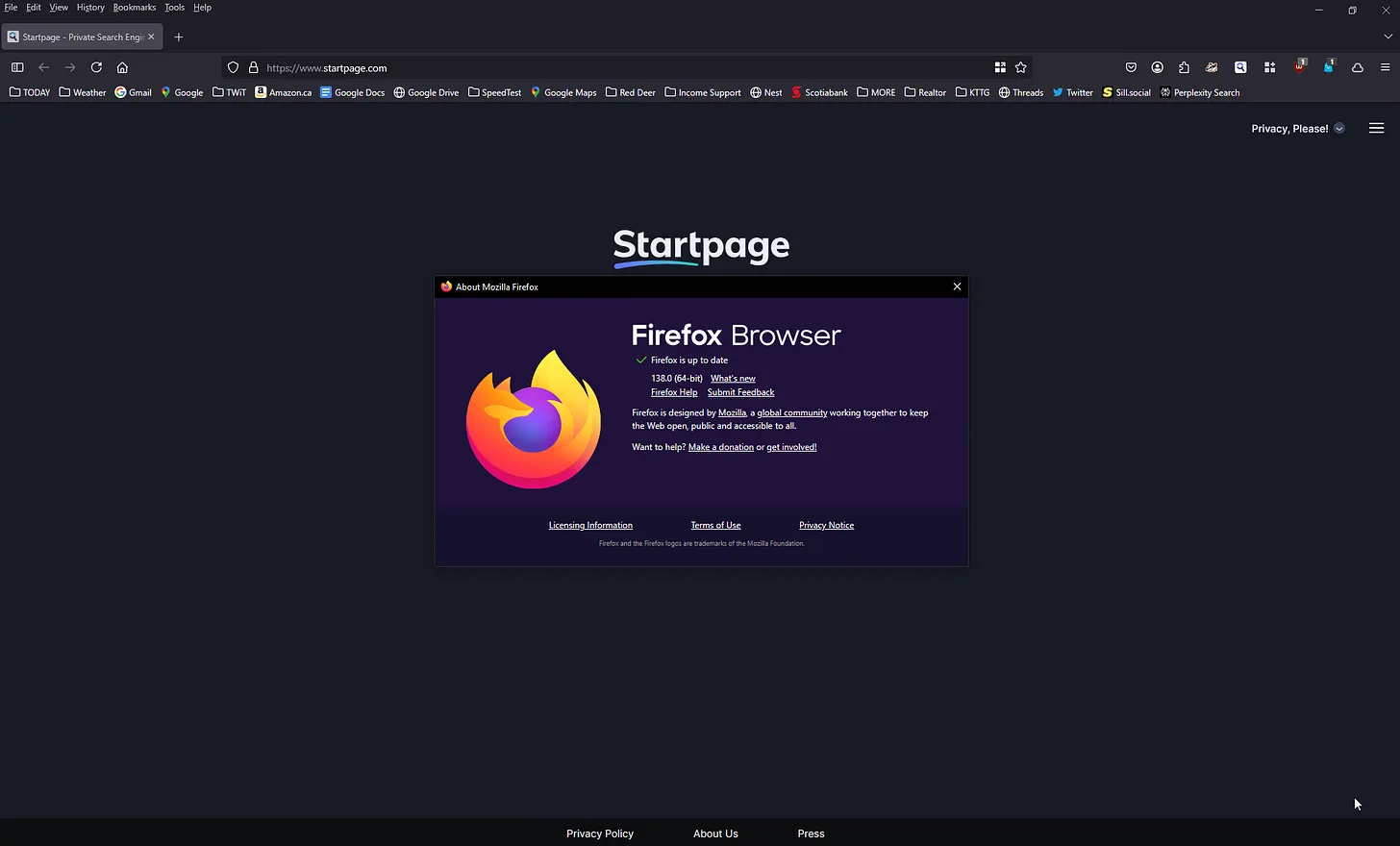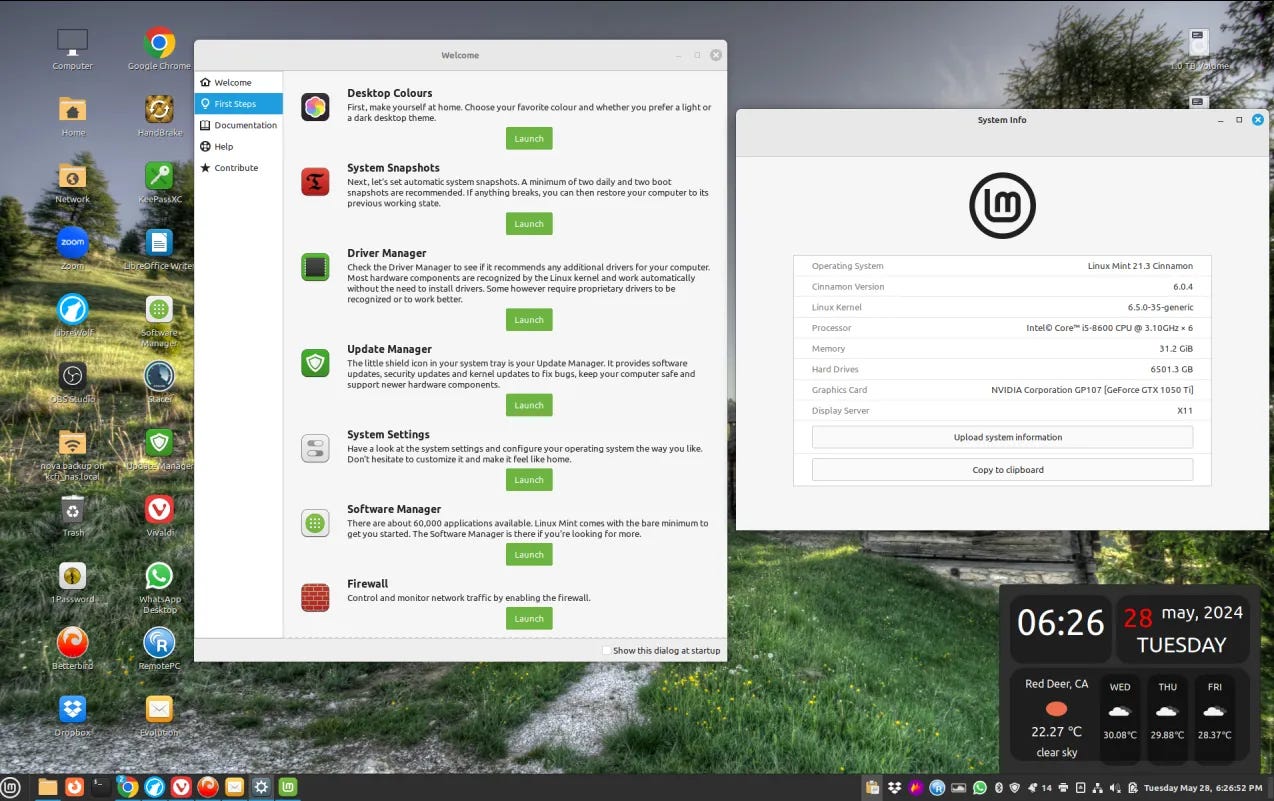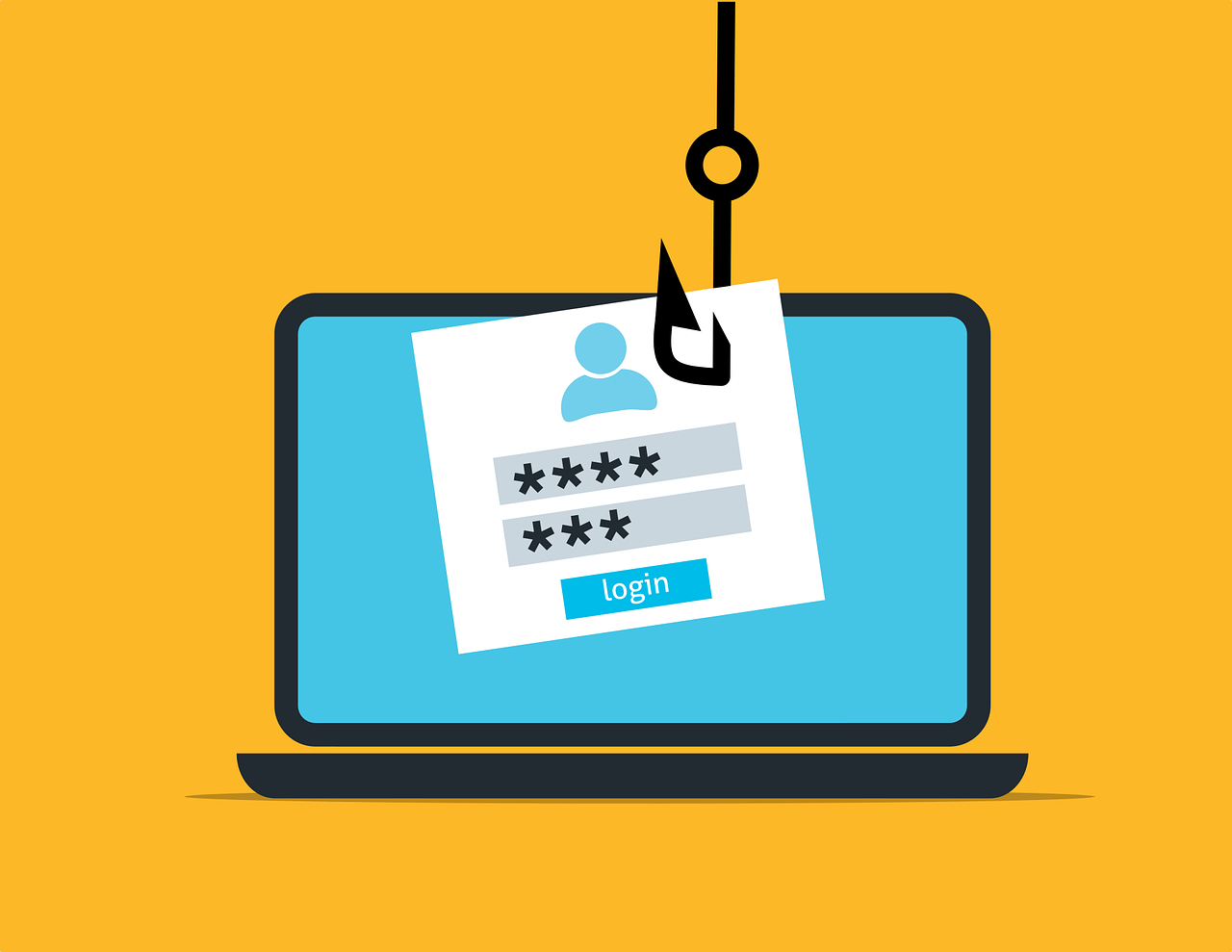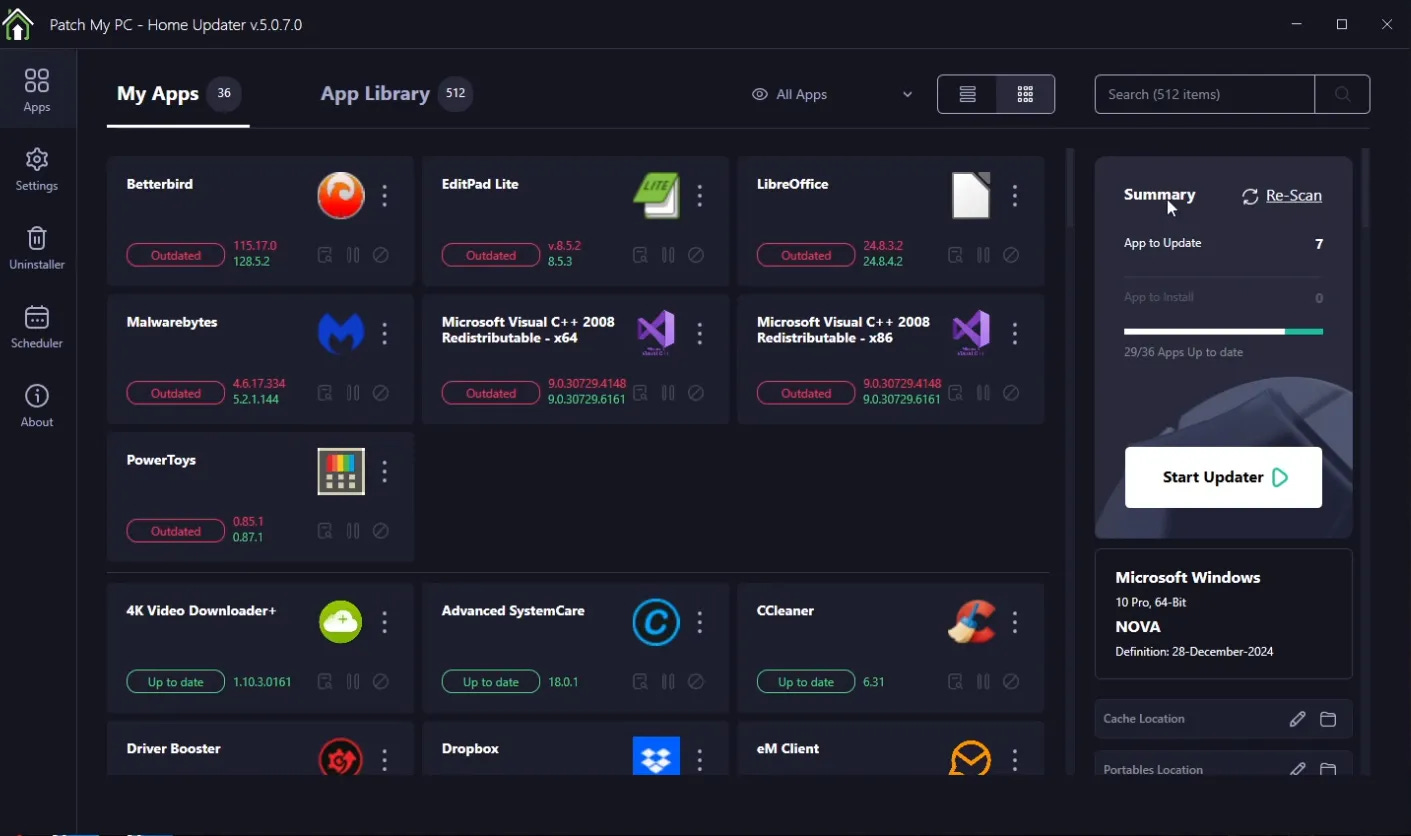The Latest From Kevin The Tech Guy for May 9th 2025
A look at Firefox Profiles, lock down browser permissions, and phishing attacks are using AI. Also: my take on Linux Mint, essential Windows apps, and highlights from the latest tech news.
Intro
Hi everyone,
This week, I’m sharing a few practical fixes and updates that might save you time or headaches.
If Firefox has started misbehaving, pages breaking, features glitching, or videos not loading properly, the problem may not be the browser itself, but the profile it’s using. I ran into this recently and put together a guide showing how to reset your Firefox profile correctly, without losing your bookmarks.
I’m also covering a small but important step I always take with Firefox: reviewing the permissions settings. By default, sites are allowed to autoplay video and send notification requests. I always disable both immediately, and I’ll show you exactly how to do that.
For those thinking about switching from Windows to Linux Mint, I’ve shared what I learned after using it full-time for two months. It’s fine for simple tasks, but I ran into enough friction that I don’t think it’s a good fit for most people.
There’s also a new post for paid subscribers about phishing emails and why I’ve stopped clicking links inside any of them, even from companies I trust. These scams have become much more convincing, and email habits need to change to keep up.
Finally, I’ve published a detailed list of Windows programs I actually install and rely on, both for my own computers and my clients’. If you want something that works without the junk or upsells, that post has everything organized with links, notes, and a much easier install process using PatchMyPC.
This week’s tech news includes a fake security patch scam targeting WooCommerce, a small but important Patreon change, and a major legal decision limiting Apple’s control over the App Store.
Let’s dive in.
What’s on Tap
🛠️ Firefox fix – Trouble loading pages or using features? I show how to safely reset your Firefox profile without losing bookmarks.
🔒 Permissions check – Tired of autoplay and pop-up requests in Firefox? I walk through the exact settings I change first.
💻 Linux Mint review – After using it full-time, here’s why I think it’s not ready for most people beyond basic tasks.
📨 Phishing is evolving – AI-powered scams are now hard to spot. I’ve changed how I handle emails—find out how and why. (Paid post)
🧰 Windows essentials – My go-to programs for cleanup, backups, and privacy—plus how to install them quickly and safely. (Paid post)
🗞️ Tech News You Might’ve Missed
🛑 WooCommerce scam alert – Fake “security patches” are hijacking WordPress sites.
📱 Patreon update – U.S. users can now skip Apple’s 30% cut in the iOS app.
📺 Roku glitch – Pause ads are breaking HDR playback for some users.
🔐 Passkeys simplified – Troy Hunt explains why passkeys may finally replace passwords.
🔓 Apple loses in court – Developers can now direct users to outside payment options.
🧷 Facebook safety tips – Four easy steps to better lock down your account.
🦊 Quick Tip: Firefox Not Working Right? Here's How To Delete the Browser Profiles and Start Fresh
➡️ The Short Version
If Firefox is giving you trouble, websites not loading, features acting up, or pages breaking, but everything works fine in another browser, the problem might be your Firefox profile. In this video, I walk you through exactly what a Firefox profile is, how to back up your bookmarks, where to find the profile folder, and how to delete it properly. Reinstalling Firefox won’t fix this issue on its own, because the profile stays behind. I’ll show you the steps I used to get things working again without starting from scratch.
🔍 Know More
If Firefox suddenly stops working the way it should, maybe YouTube won’t load, pages look broken, or certain features just stop responding, you might assume it’s time to uninstall and reinstall the browser. But here’s the thing: reinstalling Firefox doesn’t actually remove your profile, which is where most of your settings, extensions, and bookmarks live. If that profile is corrupted, the problems come right back.
In this quick tip, I walk you through safely backing up your bookmarks and then deleting the Firefox profile folder so the browser can rebuild itself from scratch. It’s a surprisingly effective fix that can save you a lot of time and frustration, and you won’t lose anything important if you back it up first.
Whether you’re helping someone troubleshoot or trying to fix your own setup, this method is worth knowing. Watch to see exactly how to do it.
🔇 Quick Tip: Firefox Permissions Settings
➡️ The Short Version
If you're using Firefox and haven't checked the permissions settings yet, you're probably letting websites do more than you think. Most people don't realize how often sites try to send pop-ups or autoplay videos until it starts getting annoying. I always disable both notifications and autoplay right away because there's really no good reason to leave them on. In the blog post, I walk through exactly where to find these options and how to set them up the way I do. It only takes a few minutes, but it makes a big difference.
🔍 Know More
If you just installed Firefox, or even if you’ve been using it for years, there’s one part of the settings I always recommend checking right away, and that’s the permissions.
Many people don’t even know this section exists, but it controls what websites are allowed to do, like send you notifications, autoplay videos, or access your location. Personally, the first thing I do is disable notifications and autoplay across the board. Every site seems to want to pop up alerts or play video automatically, and honestly, there’s no good reason for either.
The good news is that Firefox gives you full control. You just have to know where to look. In this video and blog post, I’ll show you exactly where to find these settings, how I configure them, and why it’s worth spending just a couple of minutes locking them down. Let’s take a look.
🍃 Linux Mint Review: Great Until You Need More Than the Basics
➡️ The Short Version
Are you not ready to upgrade to Windows 11 but unsure if Linux Mint is worth the switch? After trying Linux Mint full-time, I have decided it’s simply not ready for the regular user beyond basic tasks. This blog post details my thoughts, and points to my more detailed post exclusive to paid subscribers.
🔍 Know More
Not ready to upgrade to Windows 11 but not sure if Linux Mint is worth the switch? I’ve been there. Like a lot of people, I wasn’t thrilled about Windows 11’s hardware demands, Microsoft account requirements, and constant upselling.
So I gave Linux Mint a real shot. I spent two months with it as my main operating system. While it’s solid for basic tasks, I quickly ran into software limitations, hardware quirks, finicky software not designed with Linux in mind, and compatibility issues that made daily use frustrating.
That left me with three options: stick with Windows 10, move to Windows 11, or continue struggling with Linux. But there’s a silver lining that doesn’t get talked about enough. 0Patch lets us keep using Windows 10 securely without the headaches of switching operating systems.
🔗 Phishing Emails Are Now More Convincing Than Ever, Often With The Help of AI. Email Links Often Aren’t Safe. Here's Why You Should Log In To Your Accounts Manually Every Time [Paid Subs]
➡️ The Short Version
Phishing emails have come a long way, and not in a good way. With the help of AI, scammers are now crafting messages that look exactly like legitimate ones from your bank, phone provider, or streaming service. It’s getting harder to tell what’s real and what’s not, and even cybersecurity experts have been caught off guard.
I’ve completely changed how I handle emails, even from companies I trust. I no longer click any links inside them—period. I treat them simply as a heads-up to log in to each website manually myself.
In this post, exclusive to paid subscribers, I explain why this shift matters, what finally convinced me, and the simple habits I use to stay safer.
🔍 Know More
Phishing emails aren’t just sloppy scams anymore. They’ve become highly polished, often indistinguishable from the real thing, especially with scammers now using AI to craft convincing messages. Some even mimic emails from companies you already do business with, using perfect branding and tone. It’s not just the obvious red flags anymore, and relying on outdated tips like "check for typos" doesn’t cut it.
The real danger is that legitimate companies keep sending out emails that train us to click “View Your Bill,” “Verify Now,” and “Update Password.” These messages are meant to be helpful, but they also make it easier for scammers to sneak in and catch us off guard. Since most companies aren’t changing how they communicate anytime soon, we must adjust how we respond.
In this post, I explain why I’ve stopped clicking links in emails entirely, even from companies I trust, and how I now treat these messages as a heads up, not action items. I also share a few easy changes I’ve made to reduce the risk of getting tricked. Paid subscribers can read the full post and see how I approach email differently now.
🧰 Must Have Windows Programs [Paid Subs]
➡️ The Short Version
Wondering which programs are actually worth installing—and which ones I trust enough to use on my own and my clients’ computers? I’ve put together a detailed guide exclusively for paid subscribers. It includes my top picks for system cleanup, privacy protection, backups, and more, along with tips on installing them quickly and safely. If you want to skip the guesswork and get straight to what works, this post is for you.
🔍 Know More
If you've ever wondered what tools I actually trust and install on clients’ computers, this post is for you. I’ve rounded up my go-to programs for keeping a Windows PC running reliably, whether that means cleaning up junk files, protecting your privacy, or making backups easier. These aren’t just random recommendations, they’re tools I use myself for years and have tested over time.
Some of the programs I mention are completely free, while others are paid options that I believe are worth it for the added features or peace of mind. I also include an easy way to install and update many of them with just a couple of clicks using PatchMyPC, which saves a ton of time. And where it makes sense, I’ve added a few notes on setup or quirks to be aware of, so you know what to expect.
The full post is exclusive to paid subscribers and includes direct download links, plus a few affiliate links that help support my work at no extra cost to you. If you’re looking for a simple, reliable list of programs that just work, and want to avoid the bloat, nags, or gimmicks. This guide will save you a lot of trial and error.
Tech News You Might Have Missed
🛑 WooCommerce admins targeted by fake security patches that hijack sites [Bleeping Computer]
💸 Patreon update lets U.S. fans bypass Apple’s 30% fee in iOS app, more changes coming [9to5Mac]
📺 Roku clarifies how ‘Pause Ads’ work amid issues with some HDR content [9to5Google]
🗝️ Passkeys for Normal People [Troy Hunt]
🪟 Microsoft’s new “passwordless by default” is great but comes at a cost [Ars Technica]
🔒 4 ways to lock down your Facebook account beyond just a strong password [Android Police]
⚖️ A judge just blew up Apple’s control of the App Store [The Verge]
Final Thoughts
That’s it for this week.
If Firefox has been giving you trouble, or you want to make sure it’s not doing more than you’ve allowed, those quick tips should help. And if you're still debating whether Linux Mint is a good alternative to Windows 11, I hope my full-time experience will give you a clearer picture.
For paid subscribers, I’ve also shared how I handle phishing emails now, and a full list of the Windows tools I actually install and trust.
On the news side, it’s been a busy week: Apple took a hit in court, WooCommerce admins are being targeted by fake security updates, and Patreon, among others, are finally, thanks to the courts, letting users bypass Apple’s in-app fee. Plus, Roku’s pause ads are causing new problems, and Troy Hunt gave a solid breakdown on why passkeys are worth checking out.
Thanks again for reading. As always, feel free to reply if you have questions, ideas, or thoughts. (note: I DO NOT provide tech support via email)







